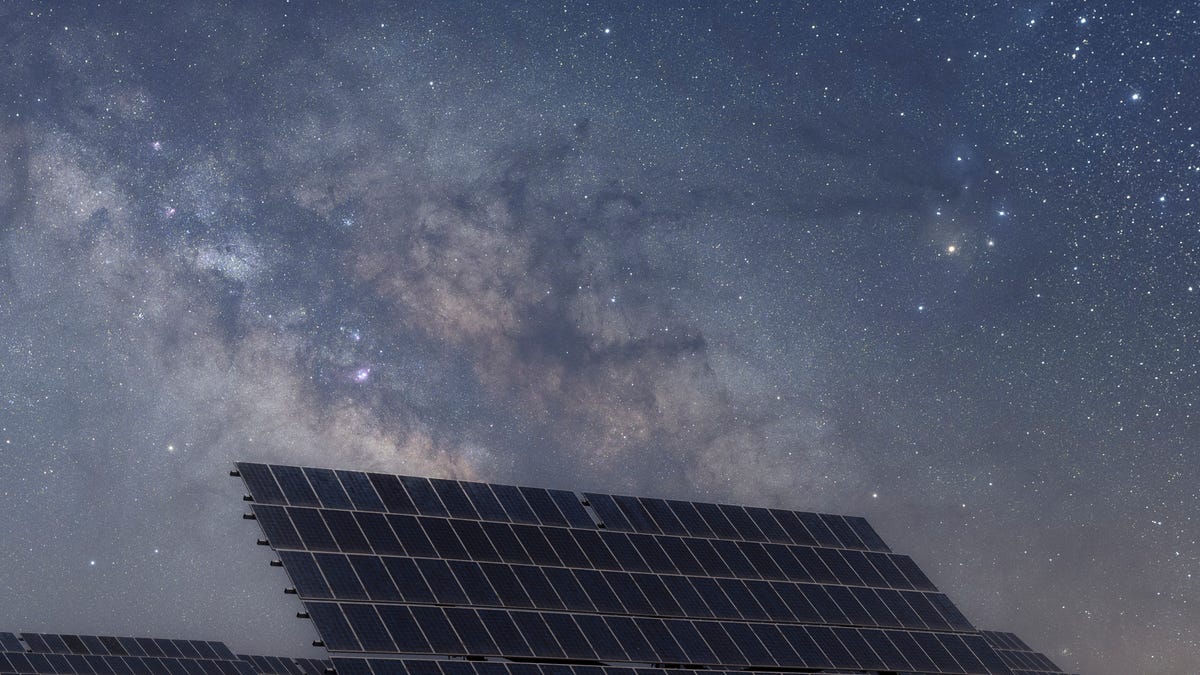Solar Panels That Work at Night Developed at Stanford
"The coldness of outer space is also an extremely important renewable energy resource," a researcher says.

Researchers have designed solar panels that can generate electricity at night.
It likely goes without saying, but of all the energy solar panels generated last year, none of it was produced at night. New research is showing that doesn't have to be the case.
Researchers at Stanford modified commercially available solar panels to generate a small amount of electricity at night by exploiting a process known as radiative cooling, which relies on, no lie, the frigid vacuum of space. The research was published in early April in Applied Letters in Physics.
"We tend to think of the sun as the important renewable energy resource," said Shanhui Fan, the lead researcher on the project. "The coldness of outer space is also an extremely important renewable energy resource."
Can solar panels save you money?
Interested in understanding the impact solar can have on your home? Enter some basic information below, and we’ll instantly provide a free estimate of your energy savings.
While the modified panels generate a tiny amount of energy compared with what a modern solar panel does during the day, that energy could still be useful, especially at night when energy demand is much lower, the researchers said.
Technically speaking, the modified solar panels don't generate solar electricity at night. Instead of exploiting sunlight (or starlight or moonlight, which still doesn't work), the researchers added technology that exploits radiative cooling.
When an object is facing the sky at night, it radiates heat out to outer space, which means that an object can become cooler than the air temperature around it. This effect could have obvious applications in cooling buildings, but the difference in temperature can also be used to generate electricity.
Fan, a professor of electrical engineering, and his fellow researchers added technology to a commercial solar panel that could do just that and were able to generate a small amount of electricity at night.
The modified panel generated 50 milliwatts per square meter at night. While that's much more than previous iterations of this technology, it's well below what a commercial solar panel can produce during the day. One back-of-the-envelope calculation returns close to 200 watts per square meter for one commercial solar panel. One watt is equal to one thousand milliwatts.
"So, this is significantly lower," Fan said. "But it may potentially be useful for some of the low power density applications." That might include nighttime lighting, charging devices, and keeping sensors and monitoring equipment online, Fan said.
Fan says that the modifications were made to commercial solar panels, which means the technology could be widely deployed. He also said that by improving the design, more electricity could be generated.
There are still a lot of questions to be answered before any commercial application can be rolled out, Geoff Smith, emeritus professor in applied physics at The University of Technology Sydney, wrote in an email response to questions. Smith, who was aware of the research but not involved, has doubts that it ever will be an economically viable source of energy.
"Adding complexity and avenues for degradation to renewable energy systems despite being scientifically interesting rarely makes it in practice," he wrote.
The research proves that you can generate electricity in this way and wasn't meant to prove anything about future practical applications, Fan said.
Still, Smith agrees that greater attention should be paid to outer space as a renewable energy source. In his view, cooling and other modes of electricity generation are more promising, but that the night sky is a valuable avenue for shifting energy use.
Even if it's not yet producing a lot of electricity, radiative cooling is pretty much ubiquitous.
"Every time you're outside, you're actually doing it," Fan said.



